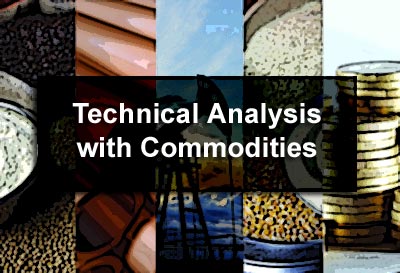Harnessing Technical Analysis for Effective Commodity Market Strategies
Technical analysis is a cornerstone of successful commodity trading, providing traders with invaluable insights into market trends, price patterns, and potential entry and exit points. Let’s explore how technical analysis is used in commodity trading and its significance in making informed trading decisions.
What is Technical Analysis?
Technical analysis involves studying historical price and volume data to forecast future price movements. It operates on the premise that market trends, patterns, and behaviors repeat over time. Key components of technical analysis include:
- Price Charts: Visual representations of price movements over time, ranging from simple line charts to complex candlestick patterns.
- Indicators: Mathematical calculations applied to price and volume data to identify trends, momentum, volatility, and other trading signals.
- Support and Resistance Levels: Price levels where a commodity tends to find buying (support) or selling (resistance) pressure.

Techniques in Technical Analysis
1. Trend Analysis
- Identifying Trends: Using trendlines and moving averages to determine the direction of price movements (uptrend, downtrend, or sideways).
- Trend Confirmation: Analyzing higher highs, lower lows, and trend reversals to validate trend strength.
2. Chart Patterns
- Reversal Patterns: Such as head and shoulders, double tops/bottoms, indicating potential trend reversals.
- Continuation Patterns: Like flags, pennants, and triangles, suggesting a pause before the continuation of the prevailing trend.
3. Technical Indicators
- Momentum Indicators: Such as Relative Strength Index (RSI) and Moving Average Convergence Divergence (MACD), gauging the speed and strength of price movements.
- Volatility Indicators: Like Bollinger Bands, measuring price fluctuations over time.
Application in Commodity Trading
1. Entry and Exit Points
- Technical analysis helps traders pinpoint optimal entry points (buy signals) and exit points (sell signals) based on price patterns and indicators.
- Example: A trader may use a breakout above a resistance level confirmed by increasing volume as a signal to enter a long position in crude oil.
2. Risk Management
- Setting stop-loss orders based on support levels identified through technical analysis helps manage downside risk.
- Example: Placing a stop-loss below a key support level identified on a gold price chart to limit potential losses.
3. Decision Support Tool
- Technical analysis acts as a decision support tool, providing traders with objective data-driven insights amidst market noise and sentiment.
- Example: Using trendlines and moving averages to filter out short-term price fluctuations and focus on long-term trends in agricultural commodities.
Conclusion
Technical analysis is essential for commodity traders seeking to navigate volatile markets and make informed decisions. By analyzing price charts, identifying trends, and leveraging indicators, traders can enhance their ability to anticipate market movements and optimize trading strategies. While no method guarantees success, incorporating technical analysis into a comprehensive trading plan equips traders with valuable tools to manage risk and capitalize on opportunities in commodity markets effectively.







